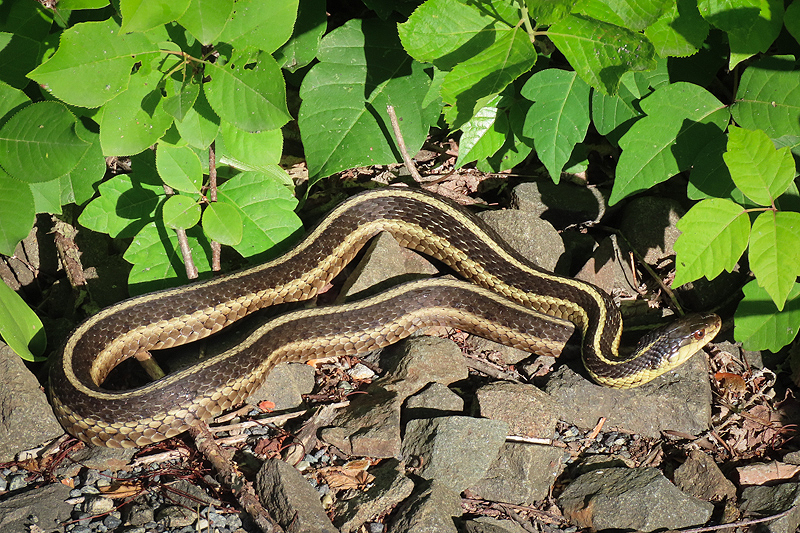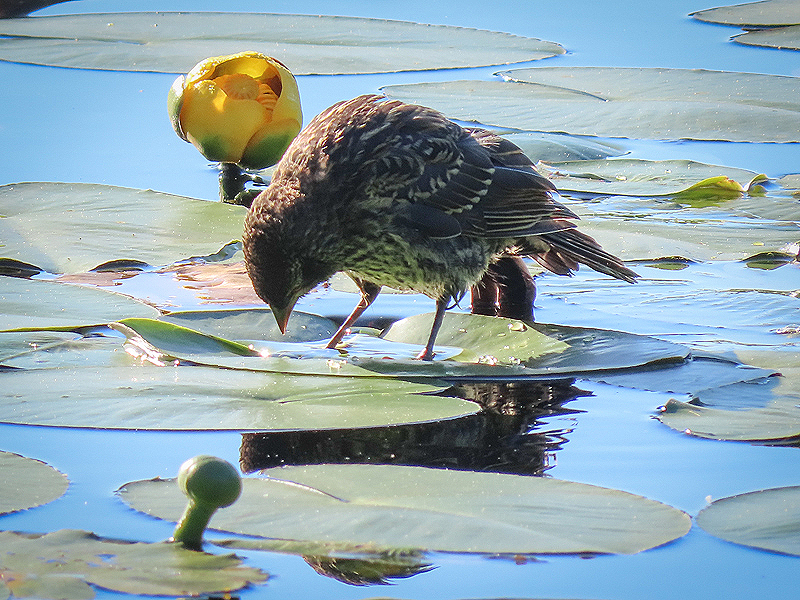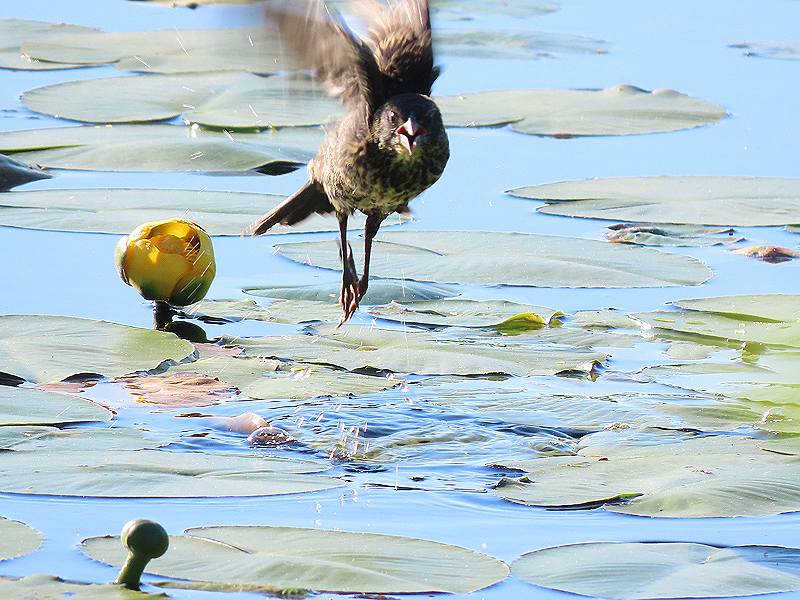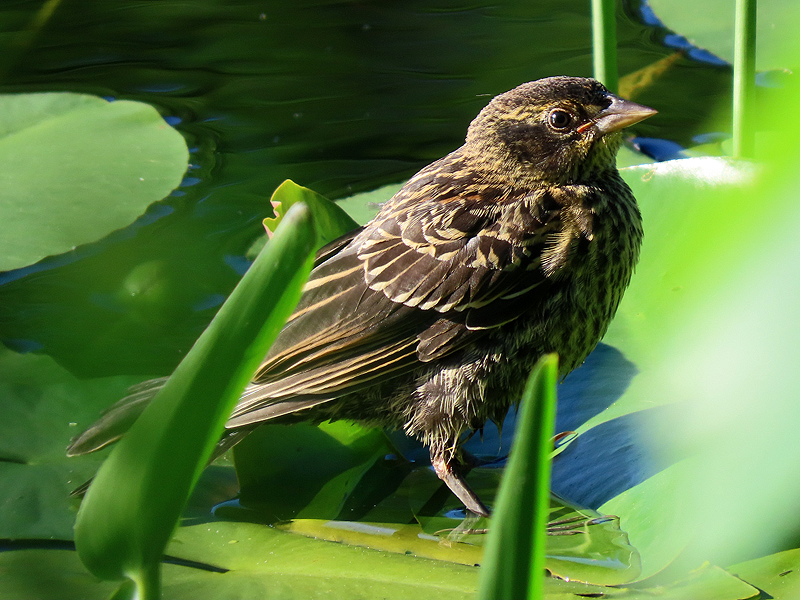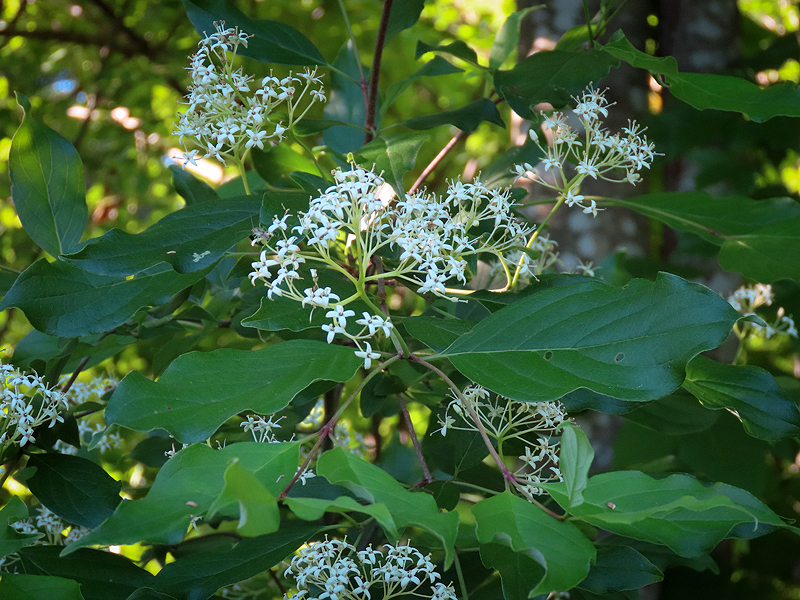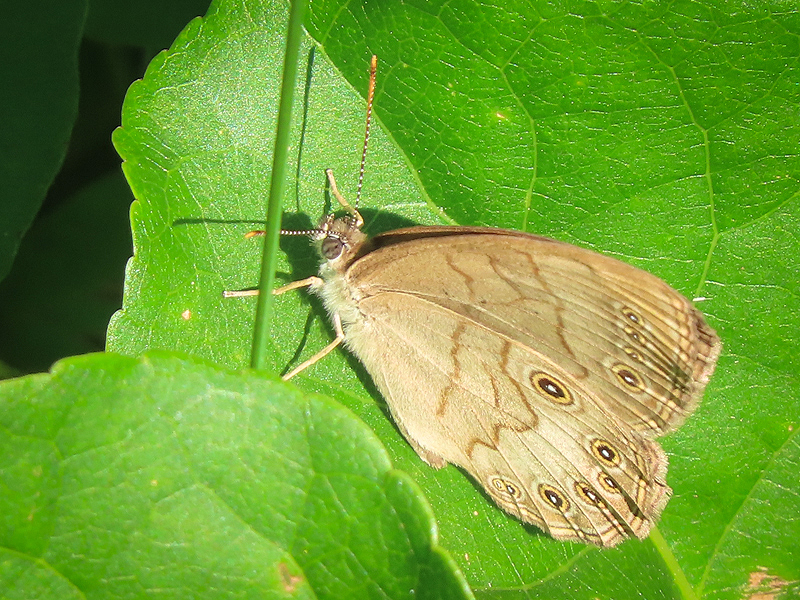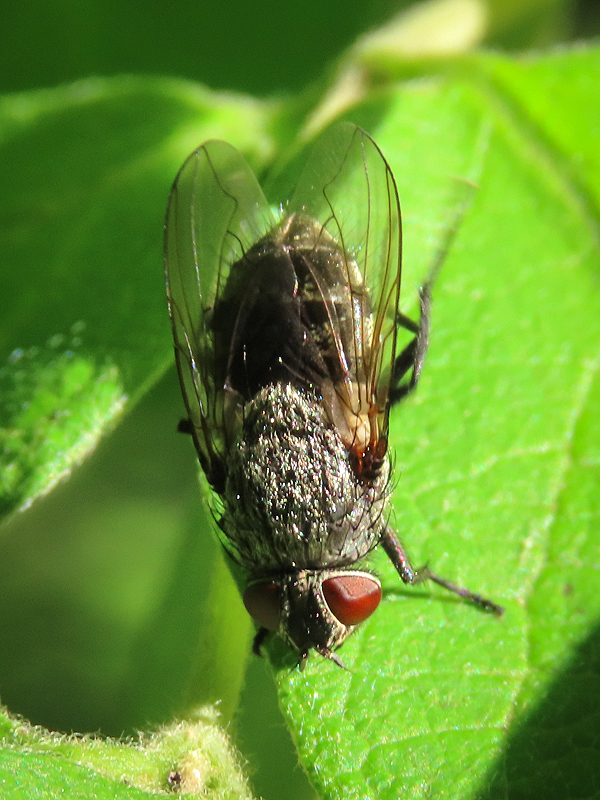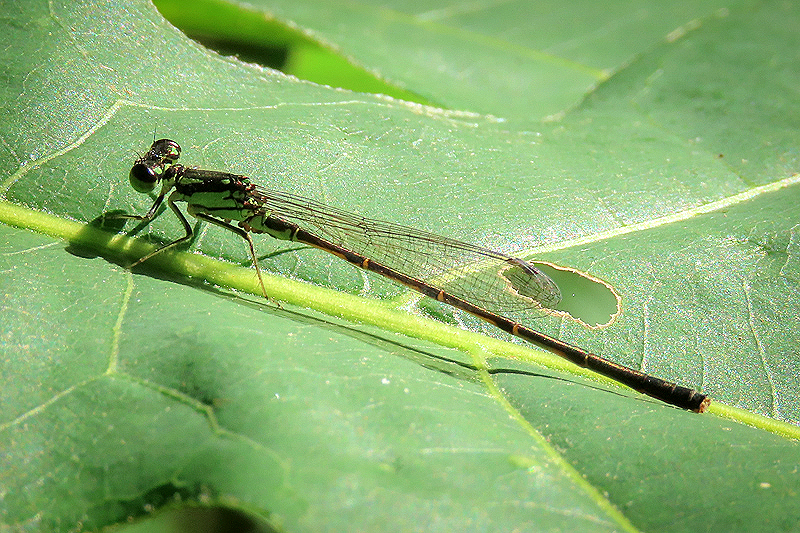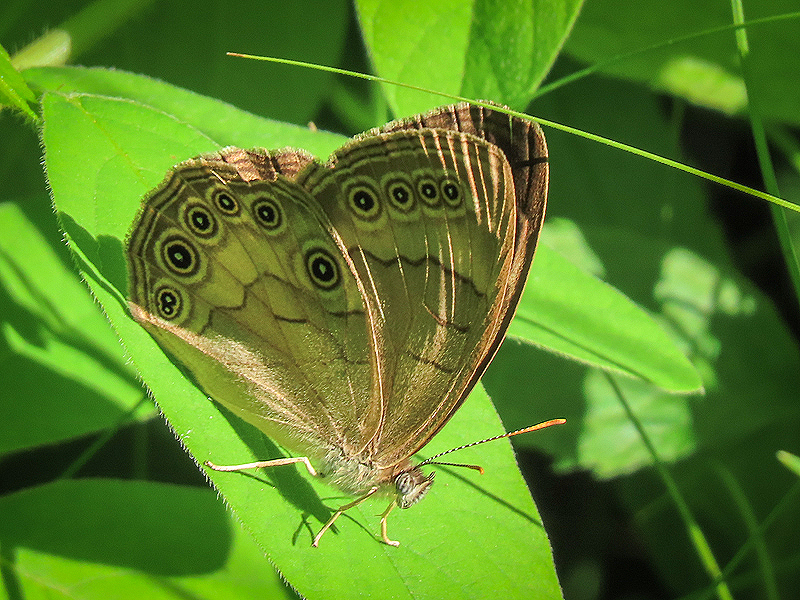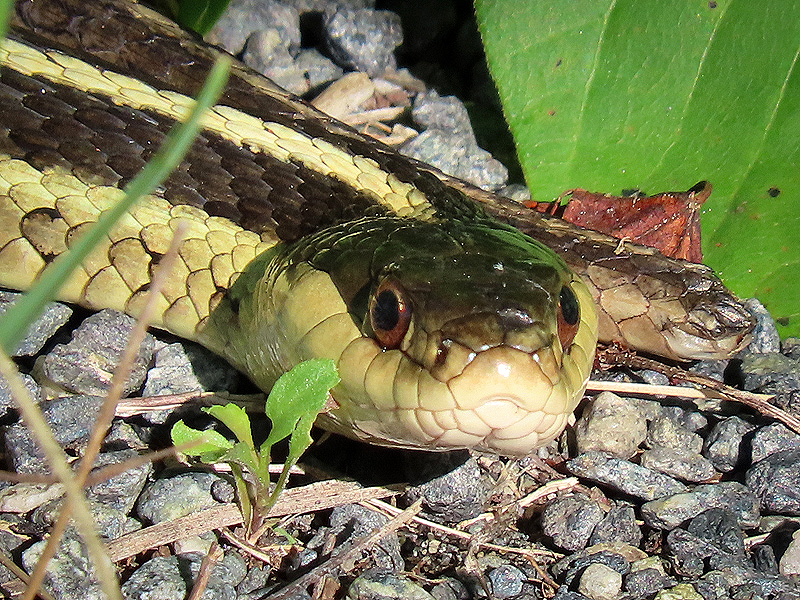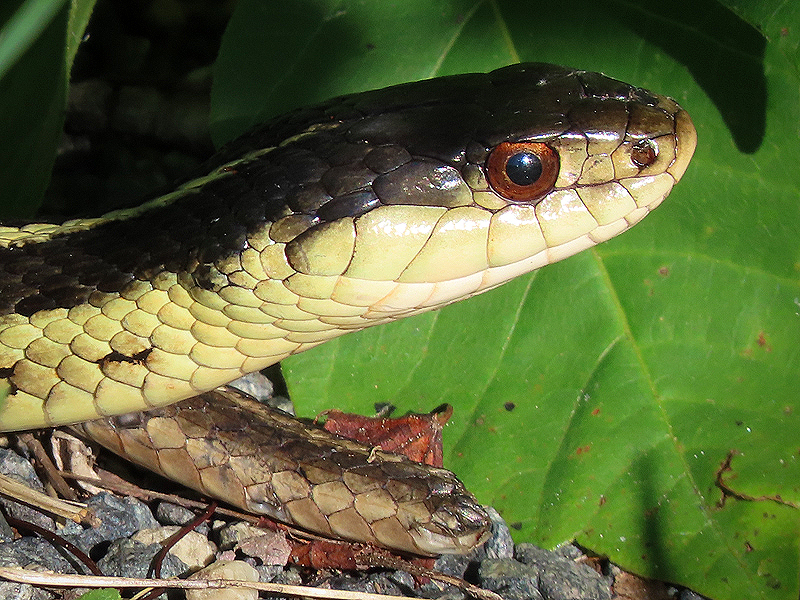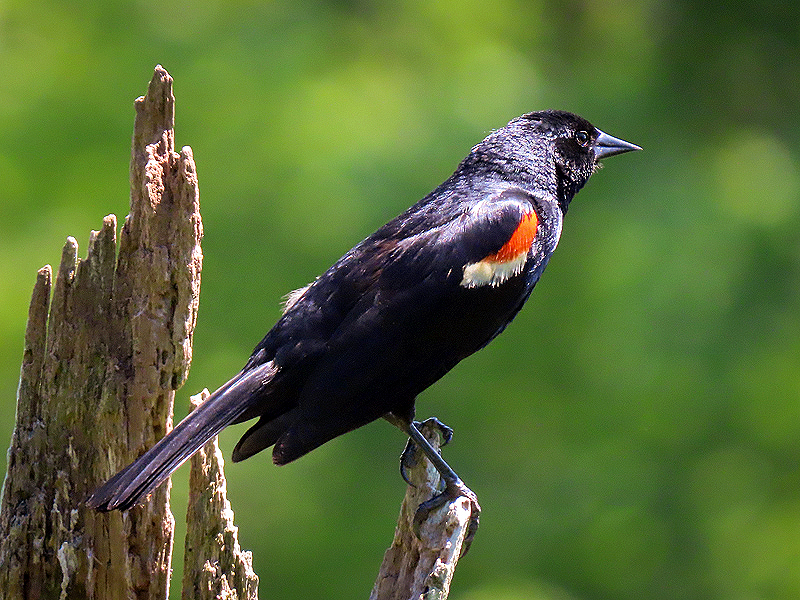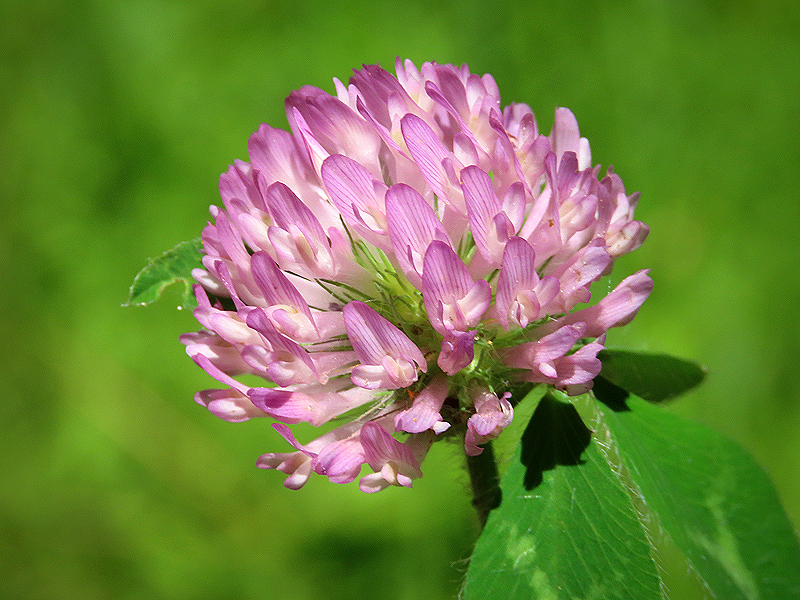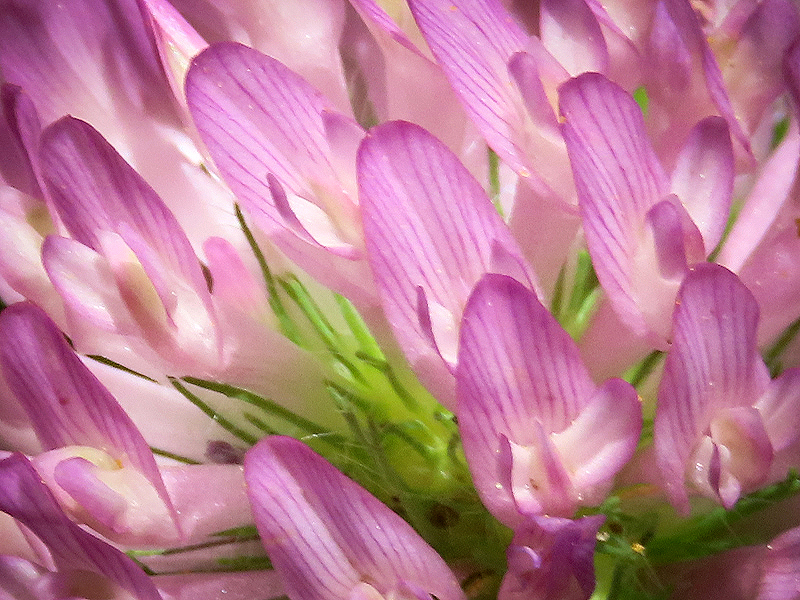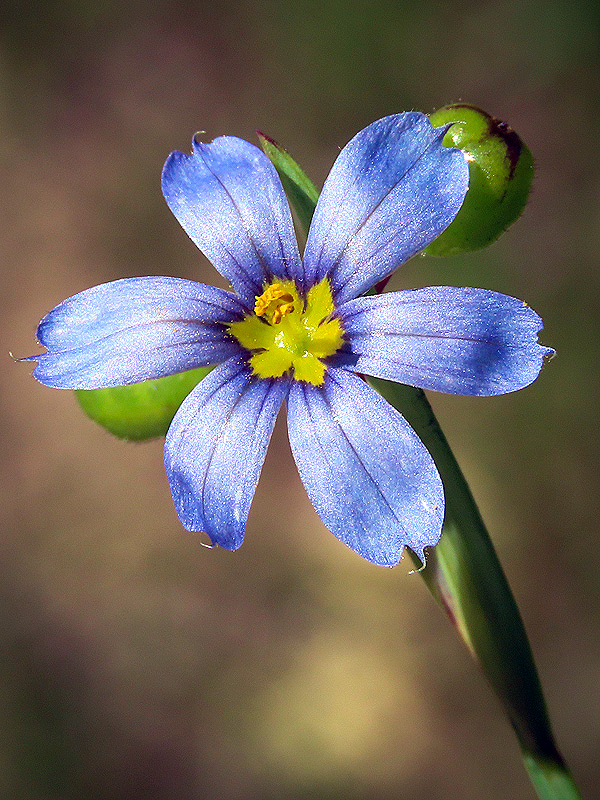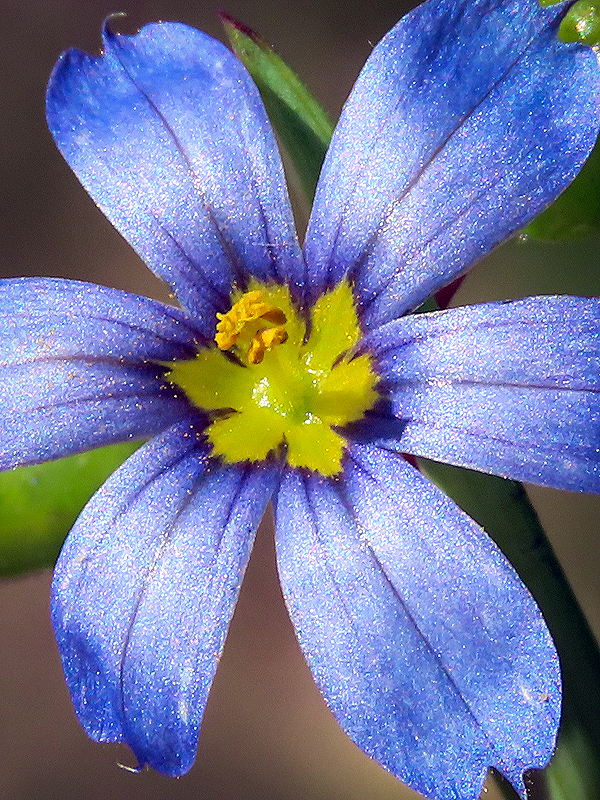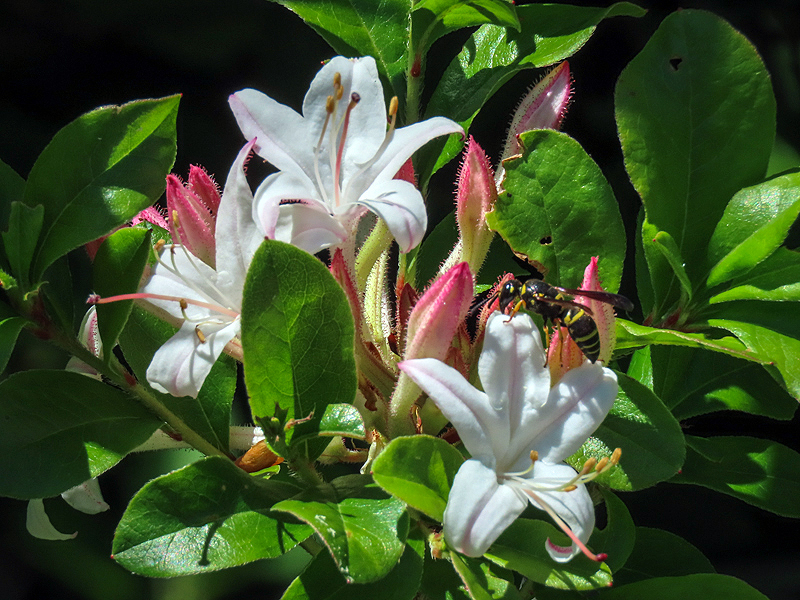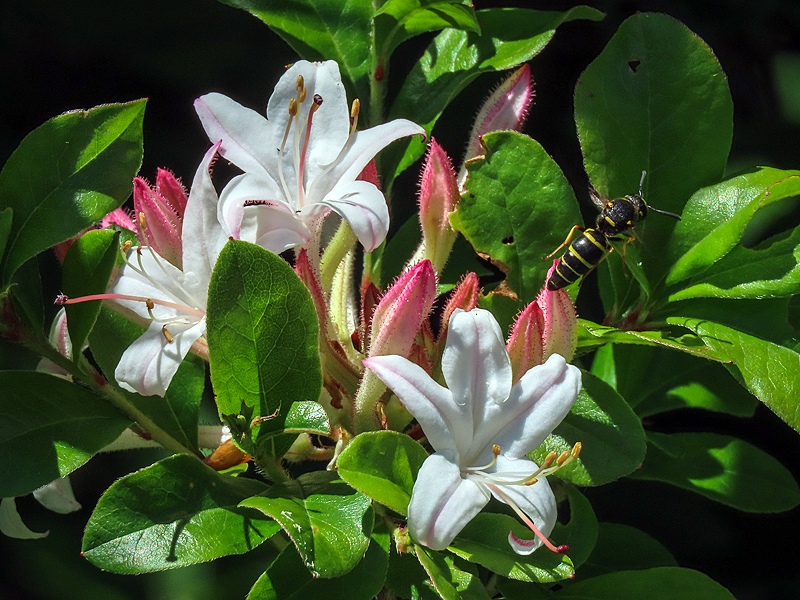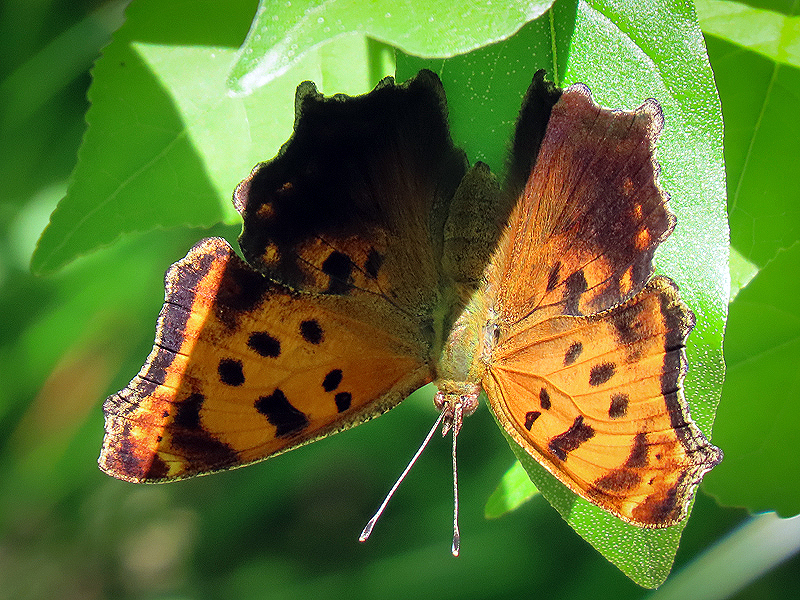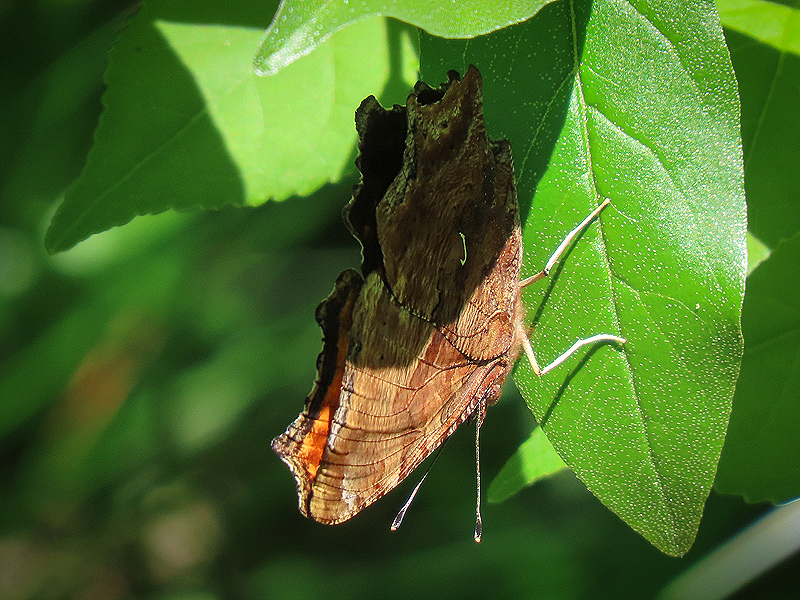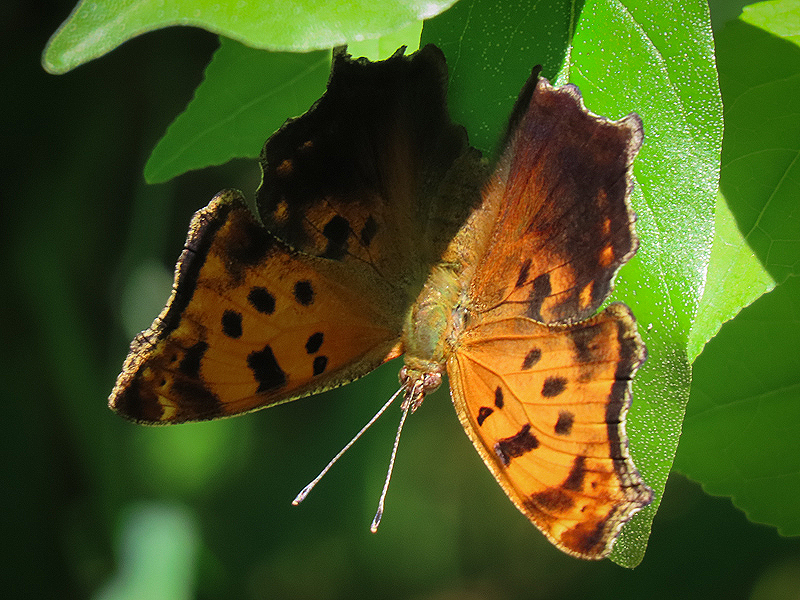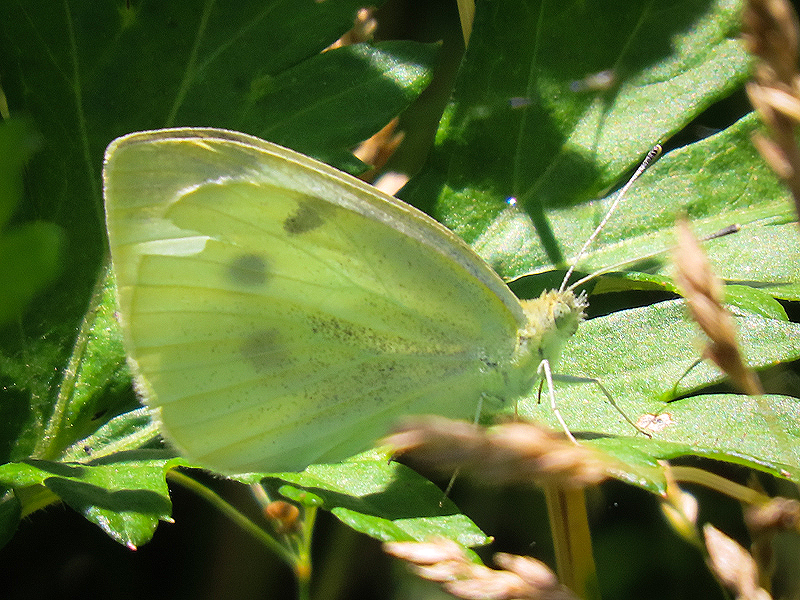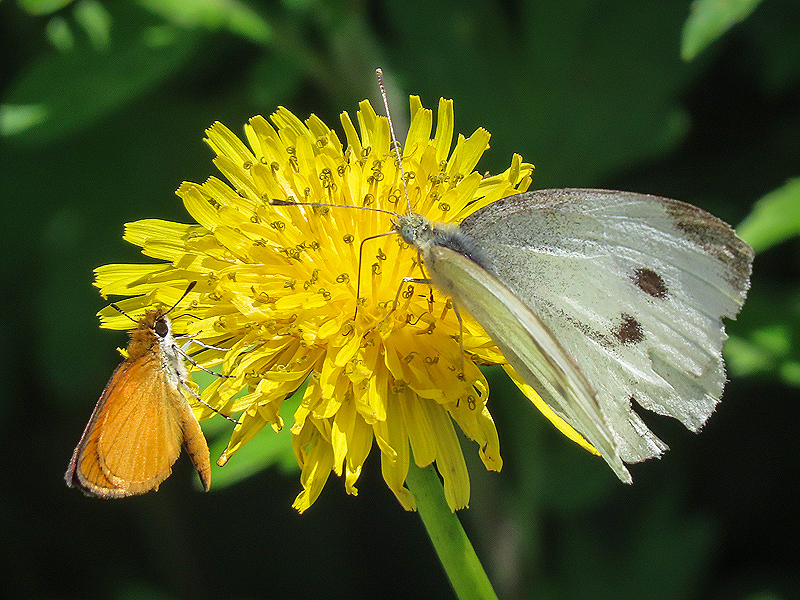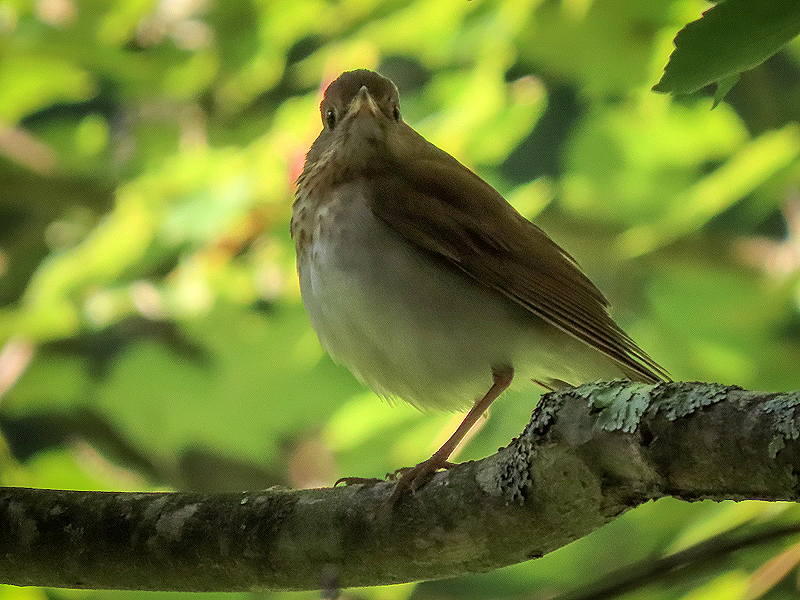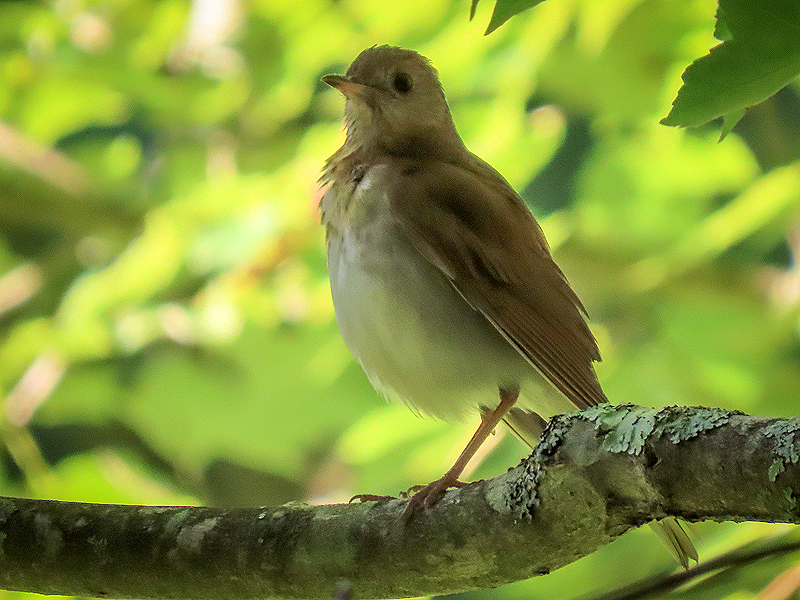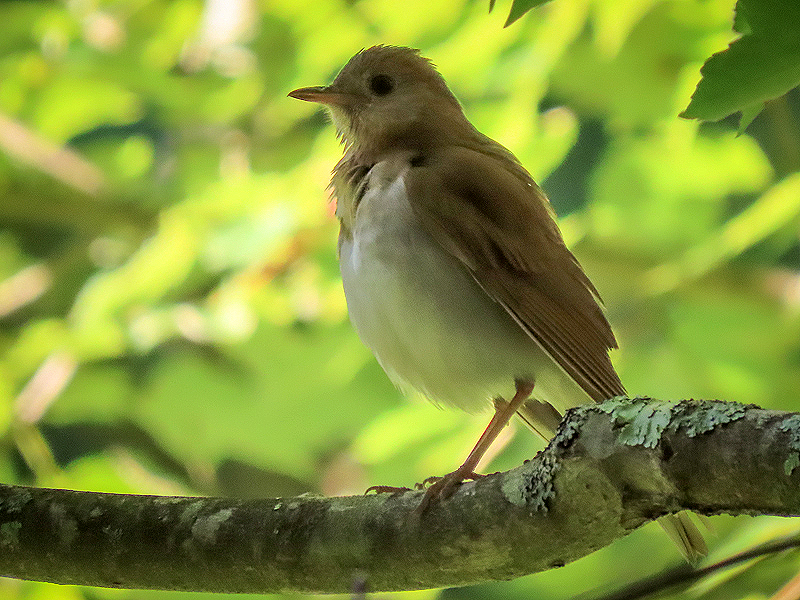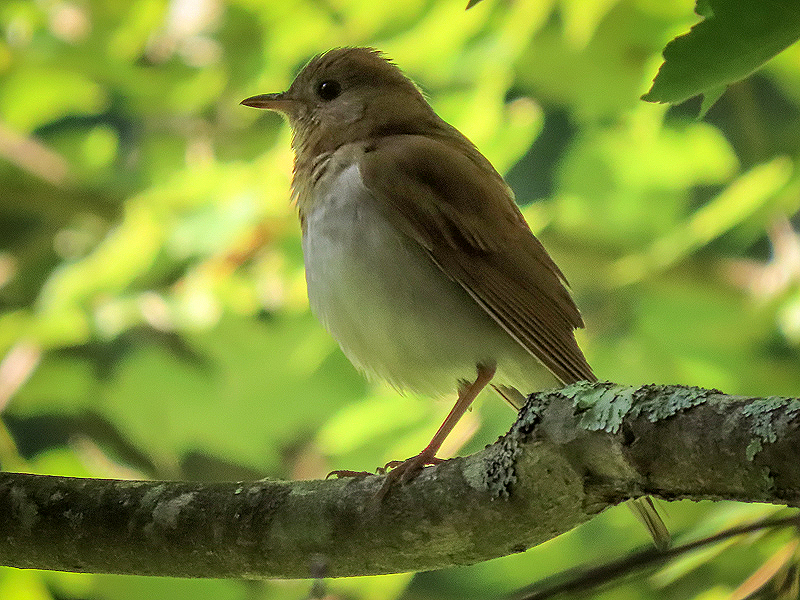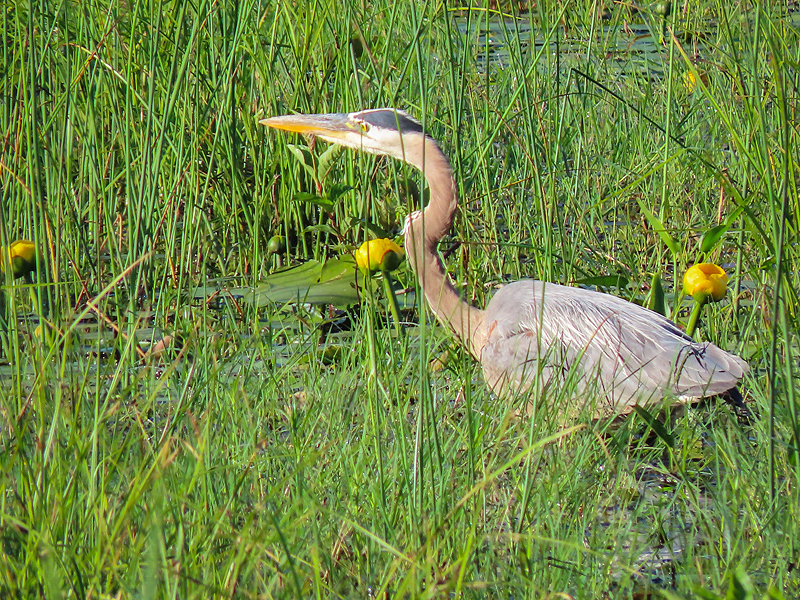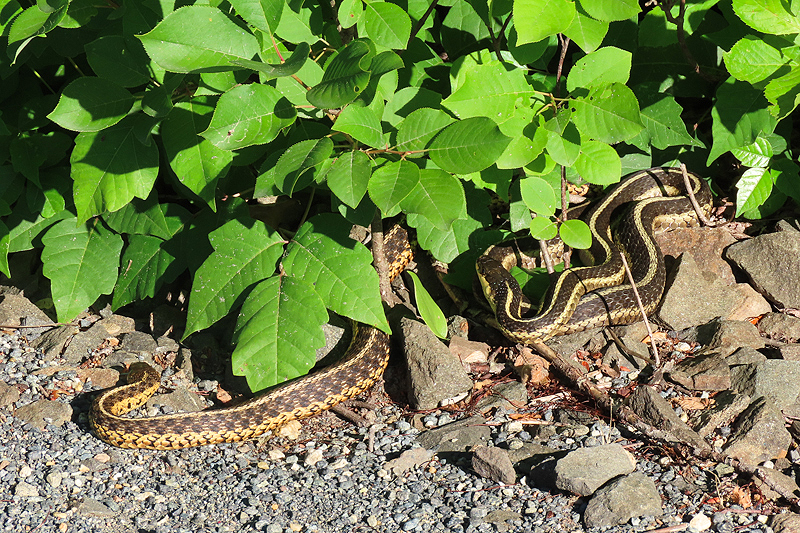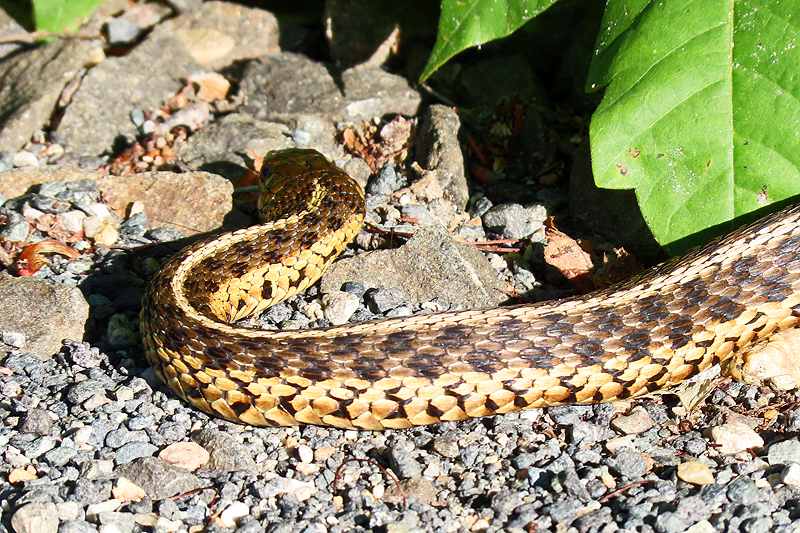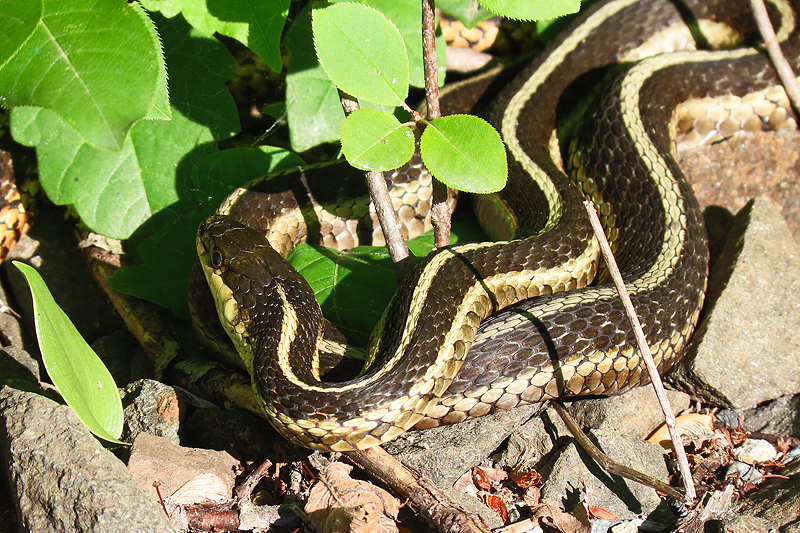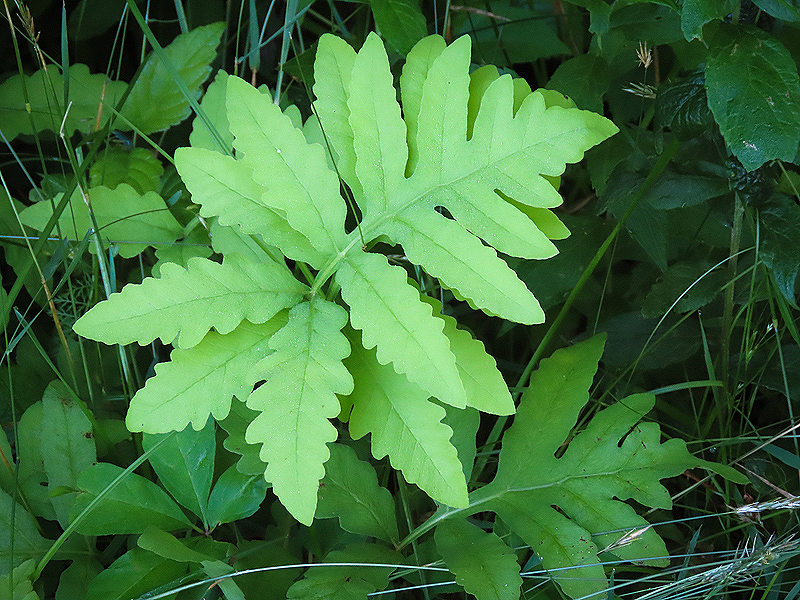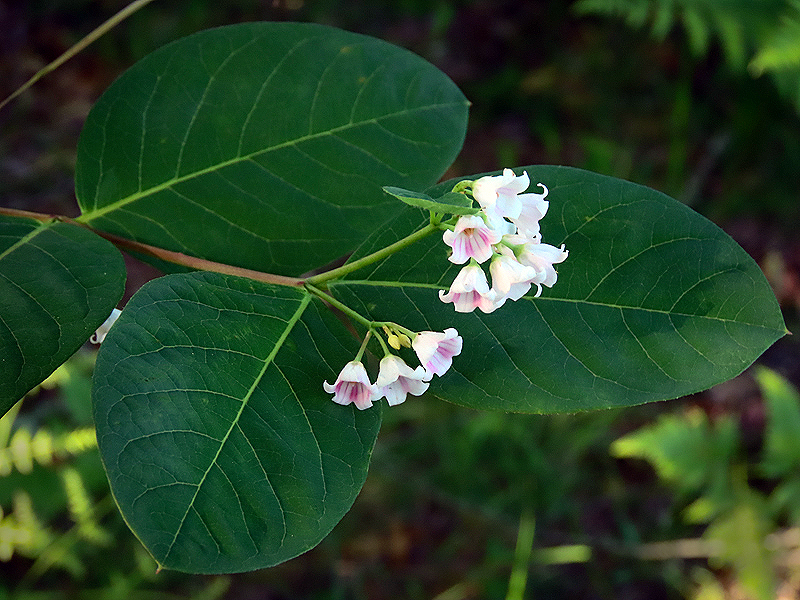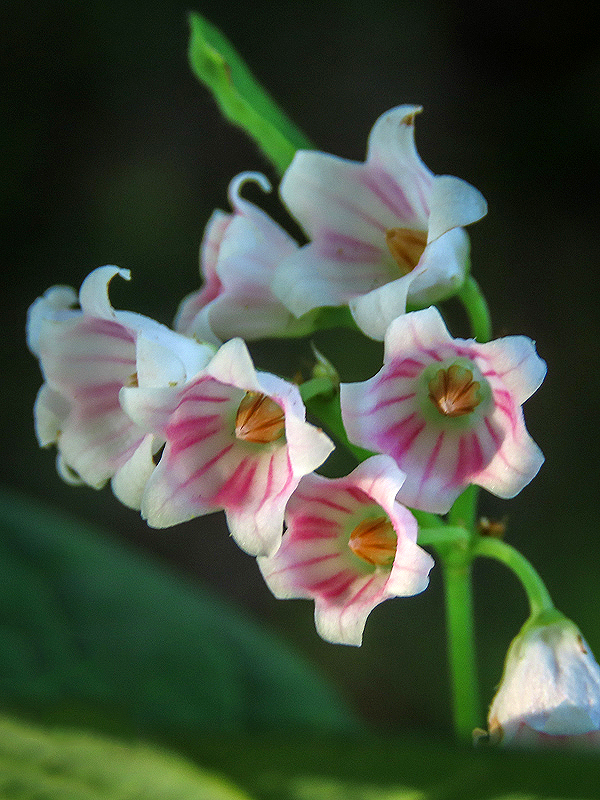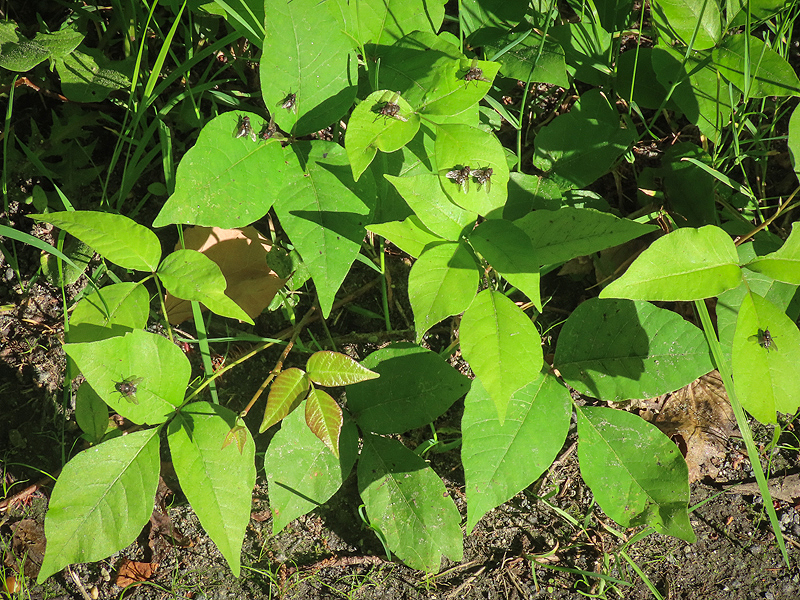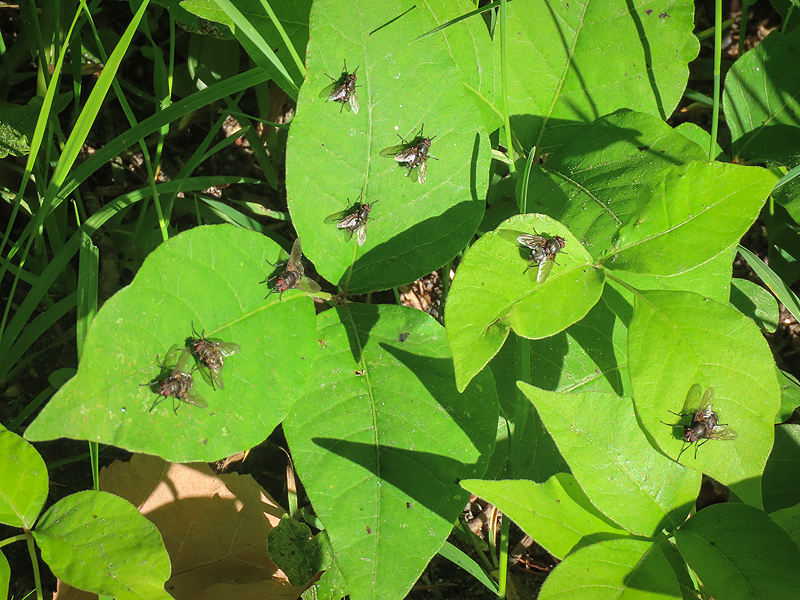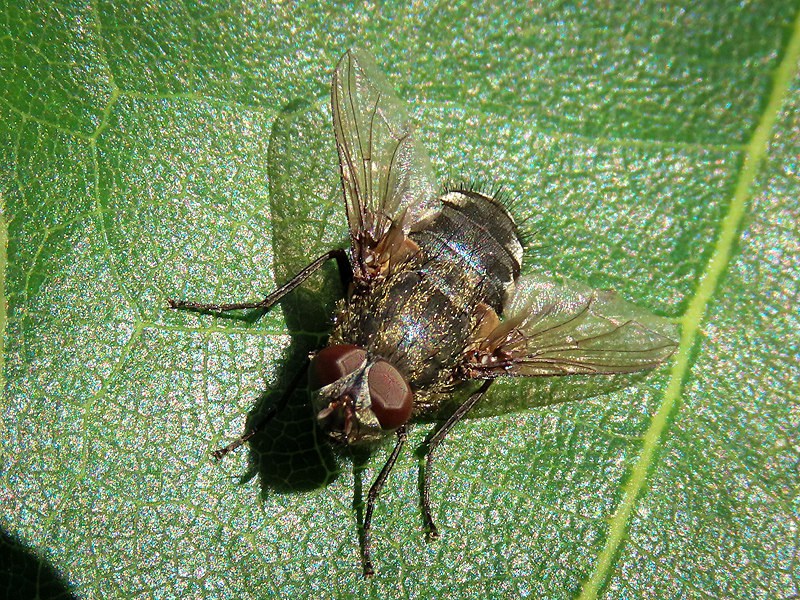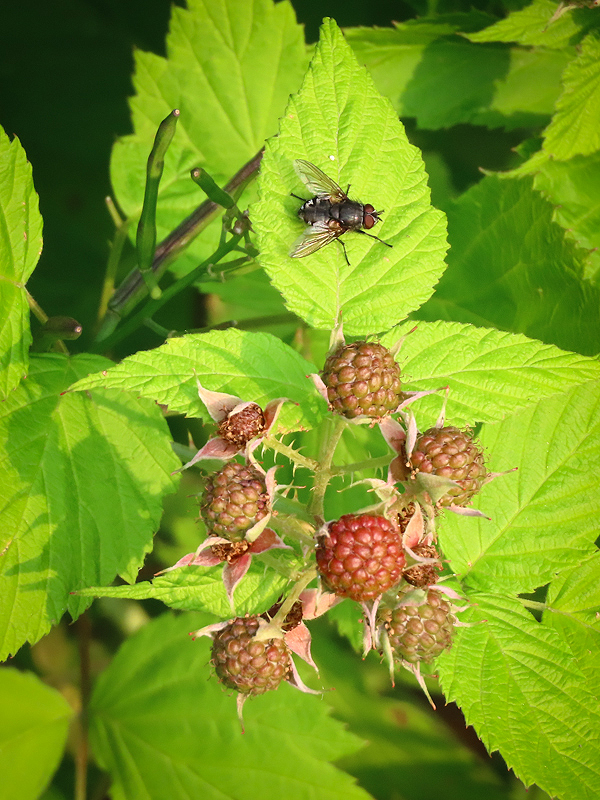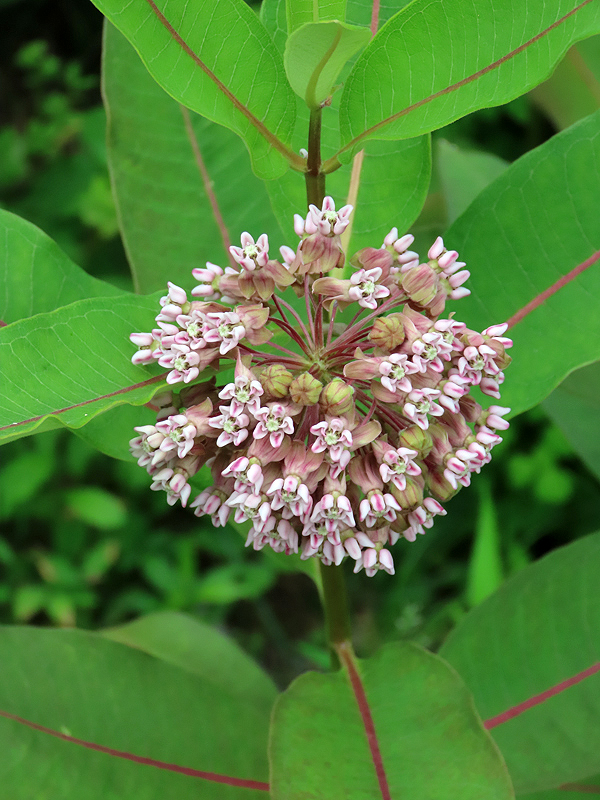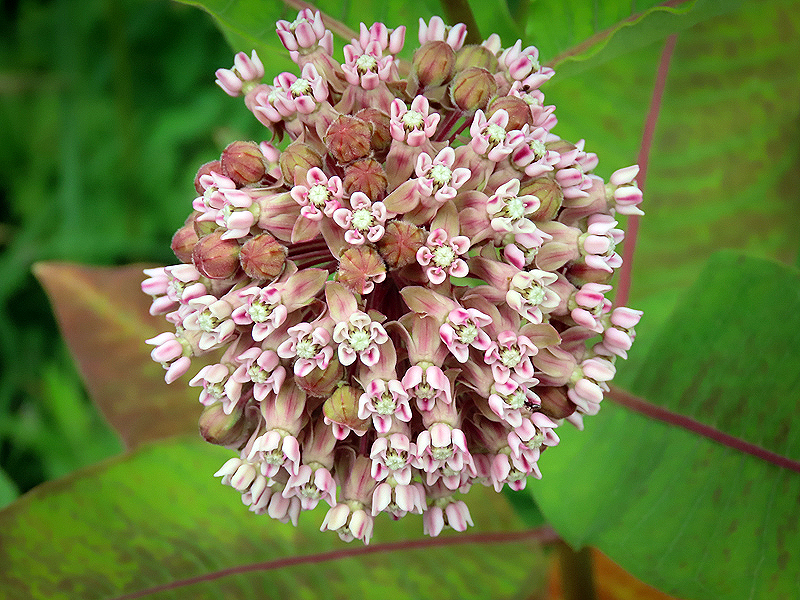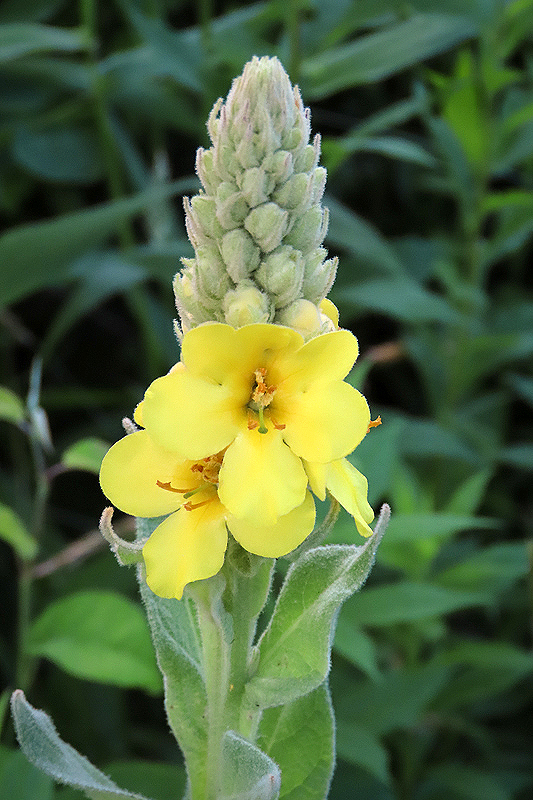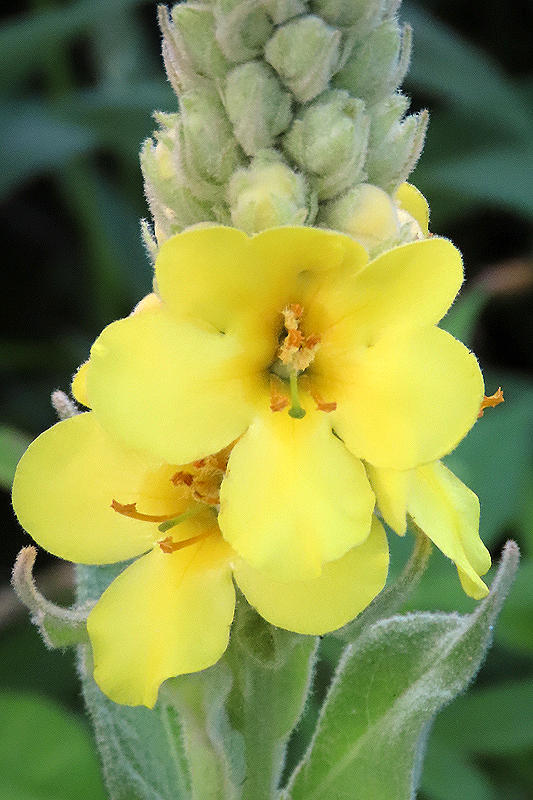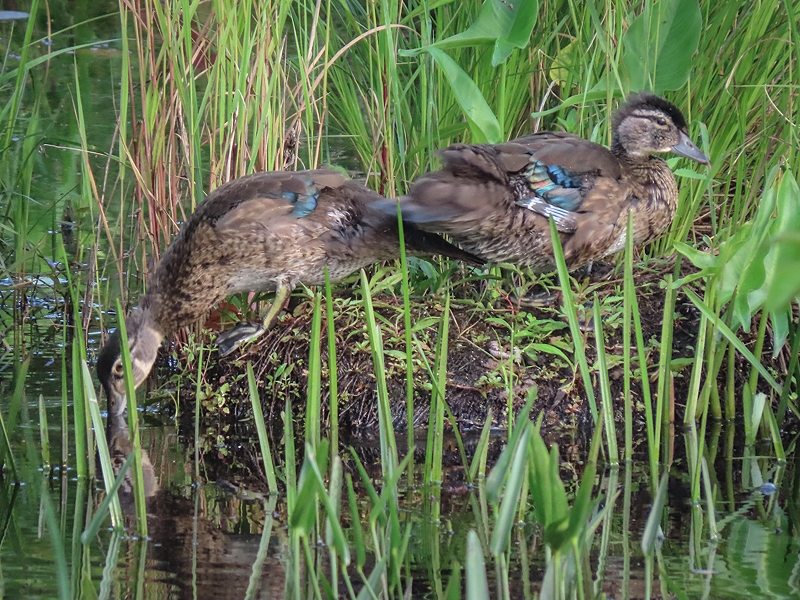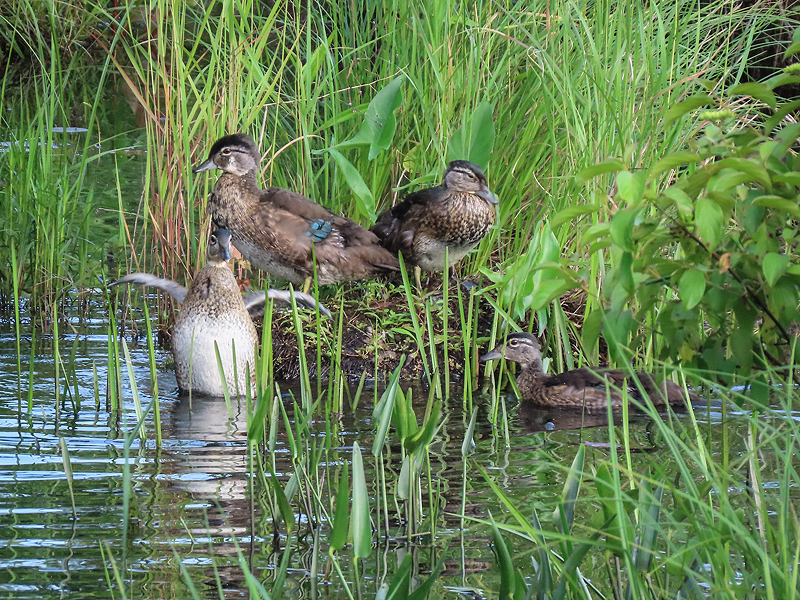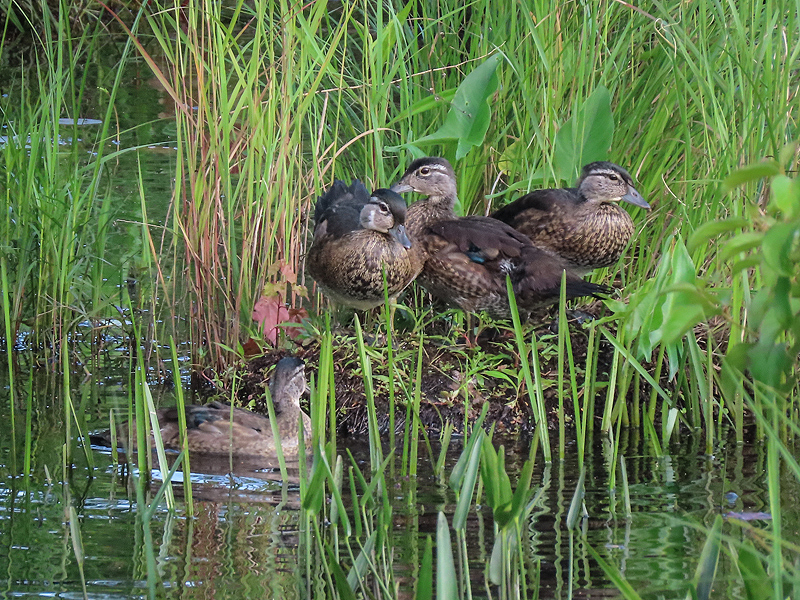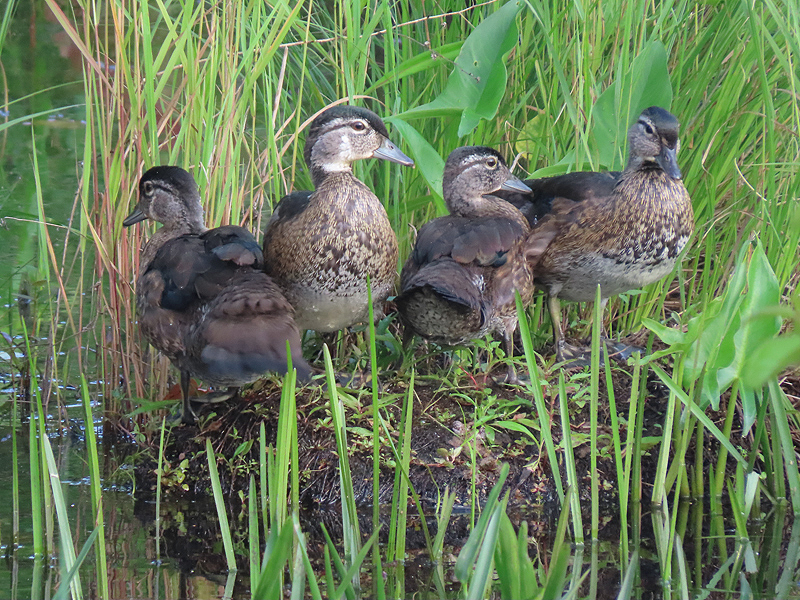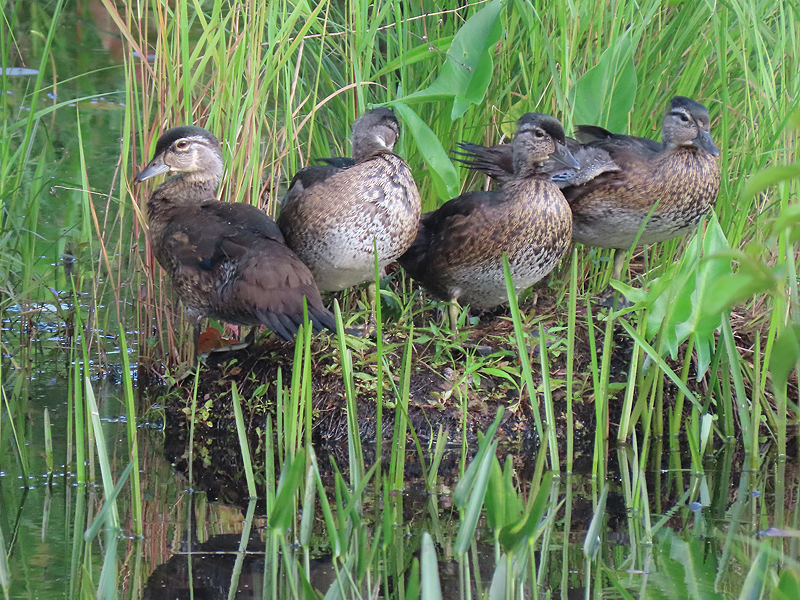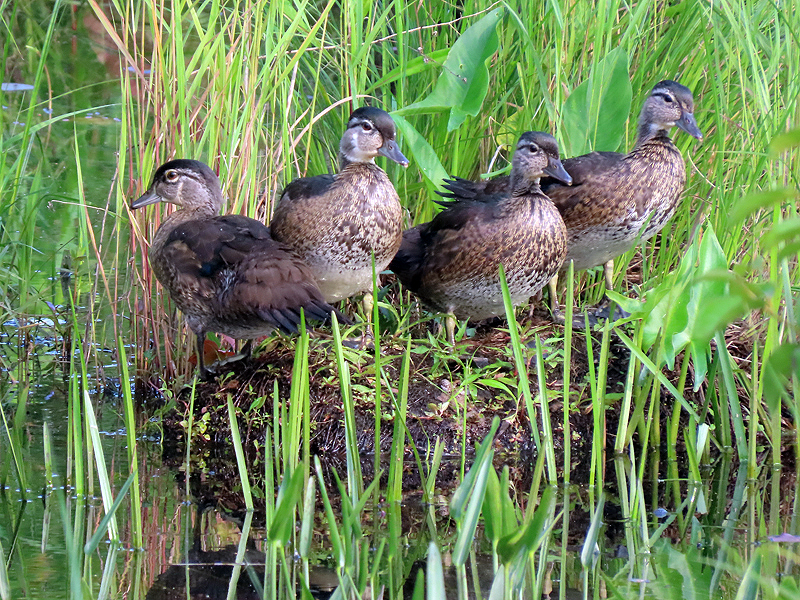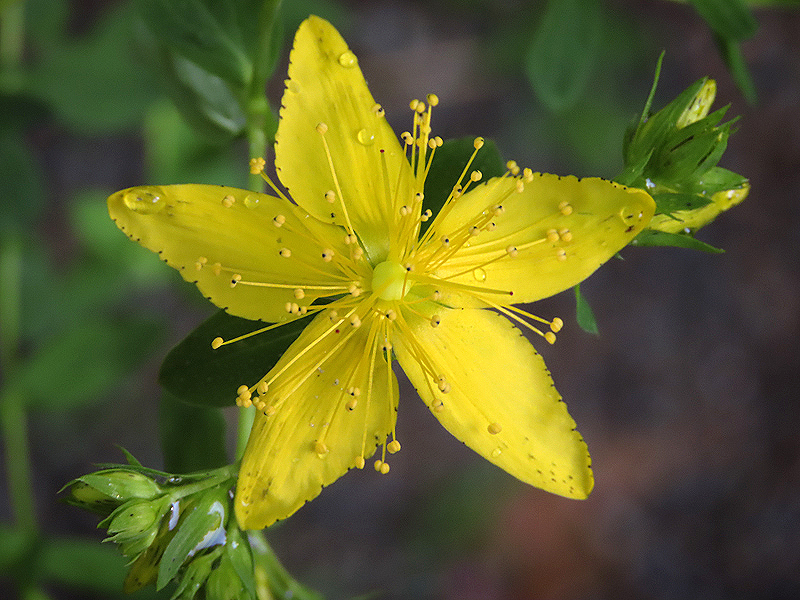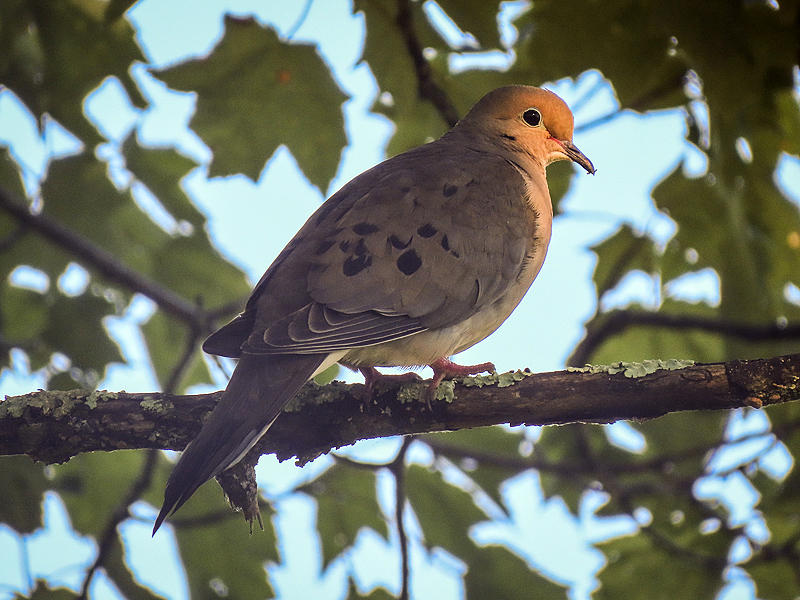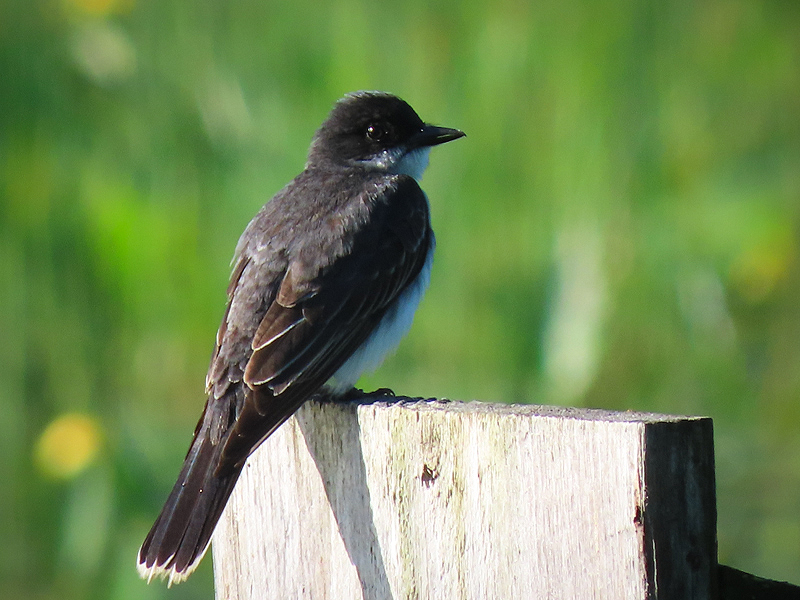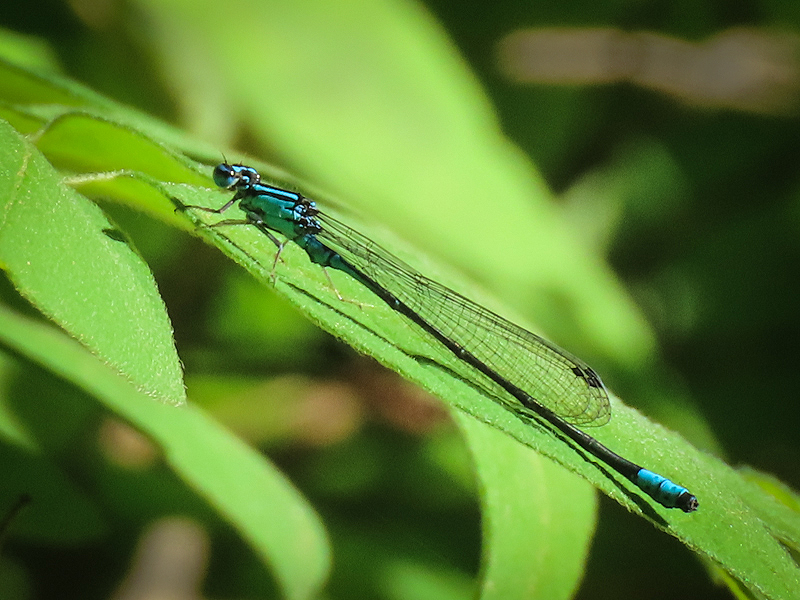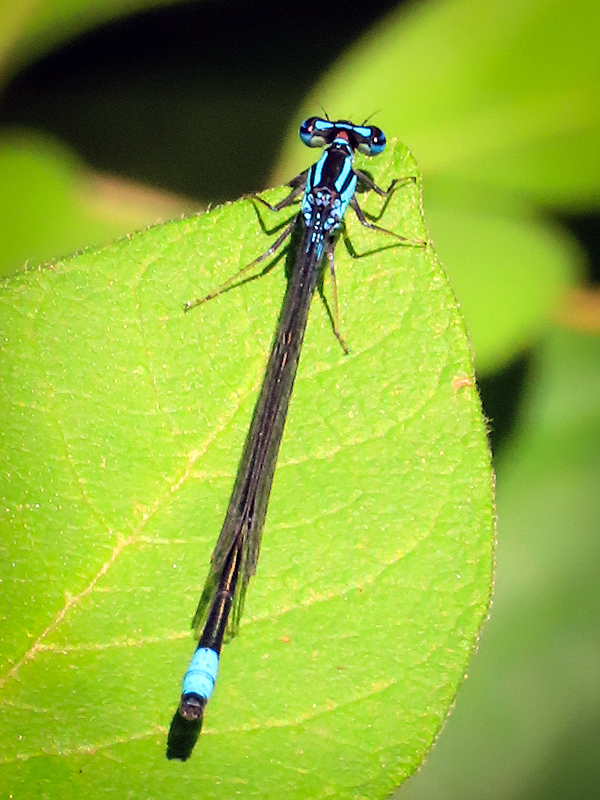Along the Air Line... 2021 - Spring, Part 26 The Air Line Trail in Eastern Connecticut - Stan Malcolm Photos |
HOME: Air Line... 2021 Pages Menu Stan's FlickR Albums |
June 16th. The same Eastern Ribbon Snake (Thamnophis sauritus sauritus) I photographed on June 7th at the same spot... |
...but as I said then, the coloration of some Eastern Garter Snakes (Thamnophis sirtalis sirtalis) is very similar. |
Young Red-winged Blackbirds (Agelaius phoeniceus) were learning to search lily pads for insects, but alternately begging food from "mom". |
That bird was spooked when the pad began to fold under it. |
The same young bird in a more secure spot. |
A Dogwood (Cornus sp.). I think Alternate-leaf Dogwood (C. alternifolia) but maybe Red Osier Dogwood (C. stolonifera). |
Appalachian Brown (Satyrodes appalachia). |
A female Pollenia labialis fly at the sunny "lek" spot I've followed for years. See for instance: https://www.performance-vision.com/airline2021/airline-spring-21v.html#flies |
A male Fragile Forktail Damselfly (Ischnura posita). |
Another Appalachian Brown (Satyrodes appalachia) with slightly different coloration. |
The same snake in the same sopot, half an hour later. |
A saw another snake not far away but it was backlit so photos were too poor to use. |
June 17th. An afternoon walk east of Cook Hill Road in Lebanon. Red-winged Blackbird (Agelaius phoeniceus). |
Inflorescence of Red Clover (Trifolium pratense). |
Close up of individual flowers. |
Blue-eyed Grass (Sisyrinchium sp.). An Iris relative, not a grass. |
|
Swamp Azalea (Rhododendron viscosum) visited by a Mason Wasp (Family Vespidae, Subfamily Eumeninae, Eudynerus foraminatus). |
|
Eastern Comma (Polygonia comma). |
A silver comma-shaped mark on the "dead leaf" underside gives it its name. |
|
Cabbage White (Pieris rapae). |
Least Skipper (Ancyloxypha numitor) with another Cabbage White on Dandelion (Taraxacum officinale). |
June 18th. Veery (Catharus fuscesans) in shadow. (I wasn't quick enough to catch it in the light where it was almost golden in color.) |
|
|
|
|
Great Blue Heron (Ardea herodias) on the hunt. |
|
Seeing these two snakes together I think they both must be Eastern Garter Snakes (Thamnophis sirtalis sirtalis). |
On the left, definitely Garter Snake coloration. |
\
On the right, probably a Garter Snake too, not an Eastern Ribbon Snake (Thamnophis sauritus sauritus) as I thought. |
Sensitive Fern (Onoclea sensibilis). |
Spreading Dogbane (Apocynum androsaemifolium). |
|
Male Pollenia labialis flies at the sunny "lek" spot I've followed for years. Today resting on Poison Ivy (Toxicodendron radicans). For background, see: https://www.performance-vision.com/airline2021/airline-spring-21v.html#flies |
The larval flies (maggots) are parasitic on earthworms. |
Close up of a male Pollenia labialis. Note how the eyes nearly touch at the top of the head. In females there is a wide gap. |
June 19th. A lone male Pollenia labialis on Wild Red Raspberry (Rubus idaeus). |
Common Milkweed (Asclepias syriaca). |
|
Common Mullein (Verbascum thapsus) is just starting to bloom. |
|
Two young Wood Ducks (Aix sponsa), still lacking flight feathers. |
Make that four. |
How many ducks can you get on that little mound? |
Four, apparently. |
|
Based on their light facial markings, the two on the left are males. |
June 20th. Common St. Johnswort (Hypericum perforatum). First flower of the year. |
Mourning Dove (Zenaida macroura). |
|
Eastern Kingbird "hawking" from atop a Wood Duck house. |
A male Turquoise Bluet damselfly (Enallagma divagans). |
Defining features are the wide black top of the thorax and lack of blue on the addomen except at the tip. |
